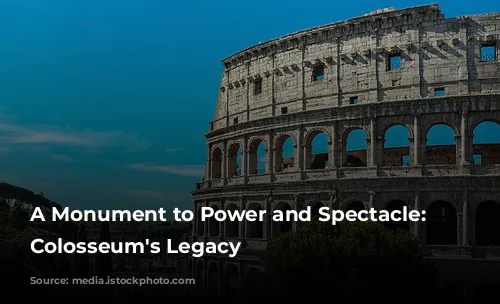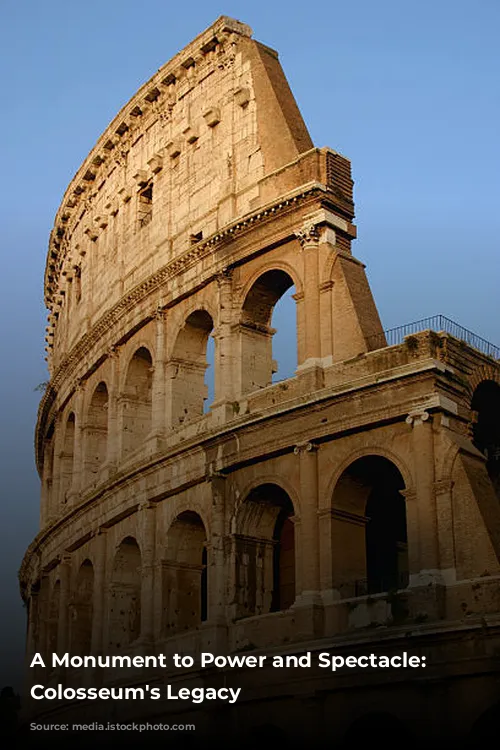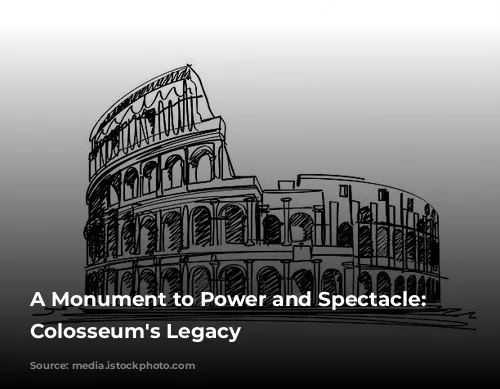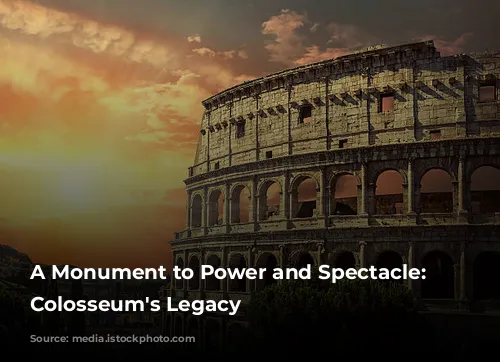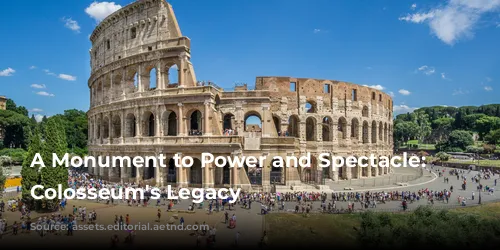The Colosseum, a name synonymous with ancient Rome, is more than just a crumbling relic. It stands as a testament to the Flavian Dynasty’s ambition and the empire’s immense power. While often associated with gladiatorial combat, the Colosseum was much more than a site of blood and spectacle. It was a monument to a resurgent Rome, a symbol of the dynasty’s rise after years of turmoil.

A Symbol of Resurgence
The Flavian Dynasty, led by Vespasian, his son Titus, and grandson Domitian, inherited a city scarred by fire, plague, and civil war. To restore Rome’s grandeur, they embarked on a monumental building program, reconstructing statues, monuments, and buildings throughout the city.
The Colosseum, built with funds from the spoils of the Roman siege of Jerusalem, served as a tangible expression of the city’s revitalization. Dedicated ten years after its construction began, it stood as a dramatic symbol of Rome’s renewed power and influence.
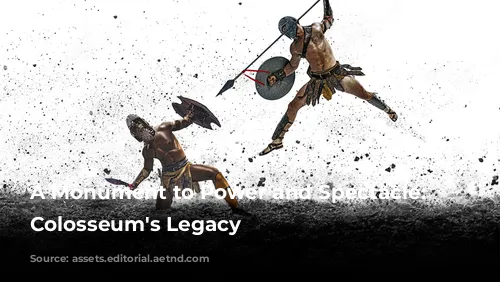
A Marvel of Architecture and Engineering
The Colosseum was not just a symbol; it was an architectural marvel. The largest and most complex permanent amphitheater of the ancient world, it was constructed primarily of concrete, travertine, marble, stone, and timber, towering over 150 feet high.
The Colosseum accommodated an estimated 50,000 to 80,000 spectators – a testament to the engineering prowess of the era. It was designed to showcase the power of the Flavian Dynasty while simultaneously providing a platform for the entertainment and social control of the Roman people.
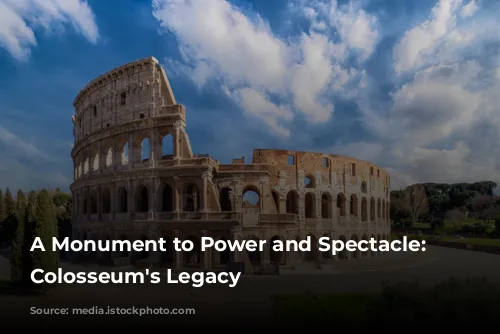
Shaping a City, Reinforcing Social Order
The Colosseum was strategically situated on the site of Nero’s Domus Aurea, a symbol of excess that had been viewed by many as a vulgar display of wealth and power. Replacing Nero’s artificial lake with an amphitheater served as a powerful statement, erasing the memory of the fallen emperor and championing the Flavian Dynasty’s achievements.
The Flavian Dynasty understood the importance of social control. While Nero had made his estate accessible to all, the senators were wary of the mingling of classes. The Colosseum, through its hierarchical seating arrangement, provided a means of reinforcing social order.
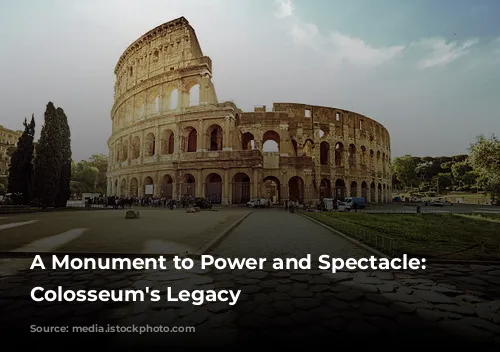
Social Status, Wealth, and Gender: Dividing the Spectators
Seating in the Colosseum was not a matter of chance. Social status, wealth, and gender determined where a spectator sat. The best seats, closest to the arena, were reserved for the Emperor and the senatorial nobility.
The Equestrian order, a class of merchants, artisans, and bureaucrats, occupied the seats above. The remaining 95% of the Roman population, including women, foreigners, and the poor and enslaved, sat in the nosebleed seats—a poignant reminder of the stark social inequalities of the time.
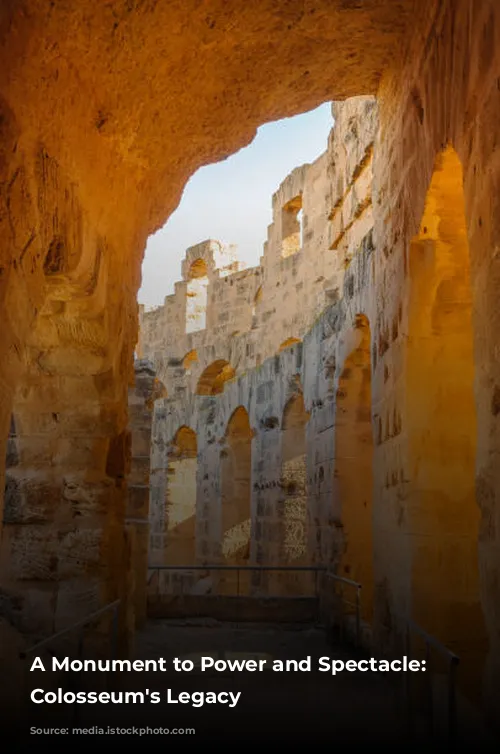
Facilitating Order and Visibility
To maintain order within the massive structure, the builders included four entrances for political and religious leaders and 76 entrances for ordinary citizens. Corridors separated social groups, preventing the free movement of spectators.
Despite the rigid social hierarchy, the Colosseum’s elliptical architecture provided everyone with a clear view of the action in the arena. This element of inclusivity, albeit within a carefully structured framework, showcased the Colosseum’s dual role as a spectacle and a tool of social control.
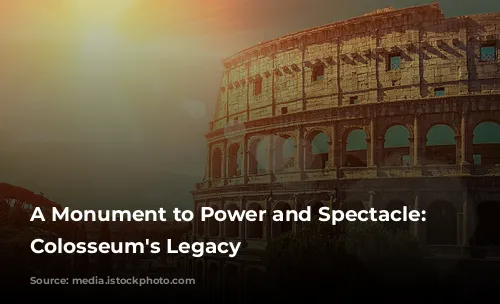
The Architectural Innovations of the Colosseum
The Colosseum stands apart from earlier amphitheaters, most of which were temporary structures made of wood. The earliest permanent amphitheater, built in Pompeii, was made of stone and accommodated around 20,000 spectators.
The Colosseum’s innovative use of concrete, a material that allowed for greater strength and flexibility, marked a turning point in architectural history. It was the largest and most widespread use of concrete in ancient Rome.
The Colosseum’s enduring legacy is a testament to the ingenuity of its builders. Its robust concrete foundation, built deep into the ground to compensate for the unstable soil near the Tiber River, has ensured its survival for over 2,000 years.

Beyond Gladiatorial Combat: Engineering and Entertainment
The Colosseum was a triumph of engineering, featuring a sophisticated drainage system to handle the water used in mock sea battles and a retractable awning to shield spectators from the sun and rain.
The hypogeum, a network of chambers and tunnels beneath the arena floor, housed props, scenery, and participants, allowing for dramatic entrances and exits, even for elephants.
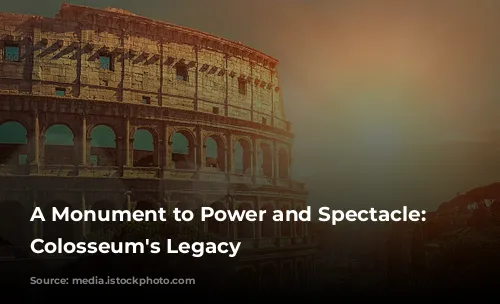
Financing a Monument: Spoils of War and Slave Labor?
The cost of constructing the Colosseum remains unknown. However, scholars believe that spoils from the Roman raid on the Jerusalem Temple, which ended the First Roman-Jewish War in 70 A.D., played a significant role in financing its construction.
While it has been commonly believed that 100,000 Jewish slaves captured during the Siege of Jerusalem were forced to labor on the Colosseum, this claim remains unsubstantiated. While the use of slaves in construction was common in the Roman Empire, the exact origin of the workforce for the Colosseum remains uncertain.
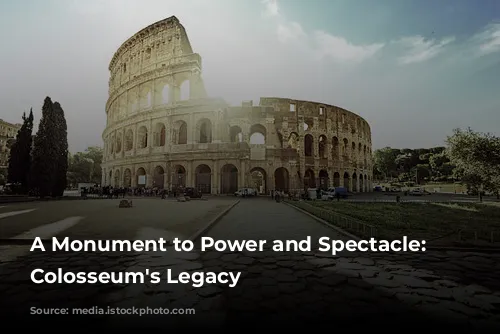
A Legacy that Endures
The Colosseum’s legacy is multifaceted. It stands as a window into the social structure of ancient Rome, a testament to the Roman empire’s power and ambition, and a symbol of the enduring power of spectacle.
The Colosseum’s innovative use of arches, its elliptical shape, and its sophisticated system for crowd control are all elements that have influenced the design of modern stadiums. This monumental structure continues to captivate the imaginations of generations, its walls whispering tales of gladiators, emperors, and a society striving for order and control.
